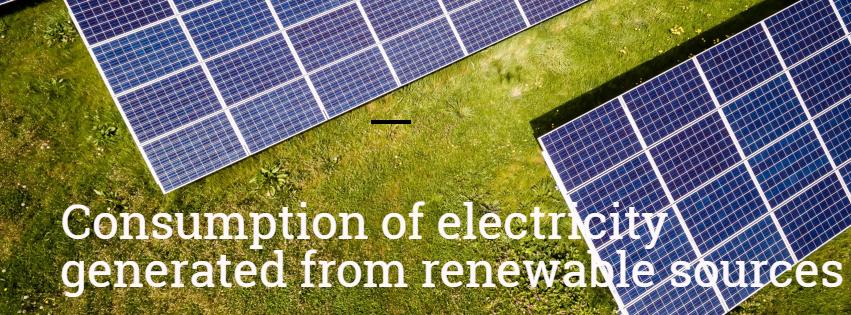Consumption of electricity generated from renewable sources

Other notable countries with high renewable-use included Finland (38.7 %), Latvia (37.2 %), Austria (33.5 %) and Denmark (32.2 %). Balancing out the table on the opposite side of the spectrum were Luxembourg (5.4 %), Malta and the Netherlands (both 6.0 %), Belgium (8.7 %) and the United Kingdom and Cyprus (both at 9.3 %).
The EU's 2020 energy target of 10% is rapidly approaching, and it seems as though they will be able to meet it with time to spare, as much progress has been made as countries ramp up their efforts to achieve their goals. Recently, the world's largest wind turbine was built off the Scottish coast - one of eleven that will provide the country with 20% of its' energy demands. Meanwhile, Portugal broke records as renewable energy made up the country's entire power consumption in the month of March. Across Europe, the winds of change are pushing governments to embrace renewables.
However, it is not just in Europe.
South Africa has committed to new renewable power deals, Nicaragua became the first country in the world to run exclusively on renewables, Saudi Arabia and China have invested a record amount in green energy and countries like the United Arab Emirates and Singapore are pushing to becoming more sustainable with their energy usage.
That being said, it is not always the countries themselves pushing for renewable energy generation and use. Cities across the world are leading the charge.
Some cities in Norway have pledged to cut their carbon emissions at a rate much larger than the country’s total goal agreed upon at COP21. French cities are looking to research and implement vehicular-based green and renewable energies through kinetics or other means. China has planned to build a forest city that will house 30,000 people and be entirely self-sufficient with the bonus that will also serve as a man-made carbon sink. The Ruhr Valley in Germany, which includes such hubs as Dortmund, Bochum and Essen, will be the country’s flagship renewable energy producer once they transition from coal mining to wind turbines – all by 2020.
As it currently stands, the average city is looking to think ahead of the curve, implementing renewables as part of their development plans to keep costs and pollution threats low while still guaranteeing adequate production and jobs. Cities are even taking their governments to court over it. In Australia, Sydney is arguing with the capital, Canberra, over their ability to produce their own power, which would not only reduce carbon emission but also the city’s soaring energy prices.
Every year, let it be in Scandinavia or Oceana, the amount of renewables being both produced and consumed is rising. As people become more aware of the dangers of fossil fuels and the benefits of renewable energy, attitudes are changing for the better.
Small cities and towns also set ambitious goals towards zero waste and zero emission. The municipality of Volvi in Greece is such example. It develops a biomass plant of 499 KW, for producing renewable energy from green biowaste and biogas plant of 150KW. The municipality of Volvi participated in 'Smart Urbana' project, where Smart City Monitor was part of the project's innovative use cases. The municipality of Volvi plans to integrate Smart City Monitor into its energy and waste management developments.
Recommended reading:
Eurostat: Renewable energy statistics
BP Statistical Review of World Energy June 2017
2025 © GOLEM IMS GMBH, Austria. ALL Rights Reserved.
Terms of Service |
Privacy Policy
Made in Austria

